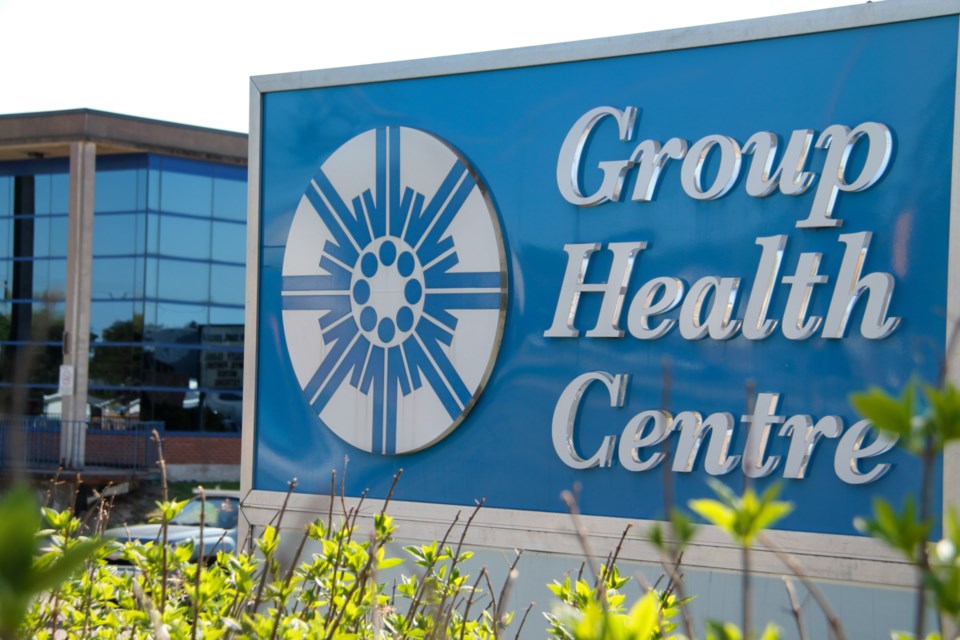Two weeks before the Group Health Centre announced it was dropping 10,000 patients from its roster, the CEO sent a blunt letter to local MPP Ross Romano — laying out the “devastating” situation and lamenting that Ontario’s Ministry of Health had still not approved nearly $11-million in funding requests from the organization.
More than two months later, the Group Health Centre (GHC) is still waiting for that funding to flow.
In her Jan. 12 letter to Romano, president and CEO Liliana Silvano spoke in frank terms about how the shortage of primary care providers is having a “devastating impact on patients, their families and the community.”
The letter was sent two days after a meeting between the two, and less than two weeks before Group Health made the devastating announcement that 10,000 patients would be suddenly de-rostered.
The letter offers new insight into the behind-the-scenes discussions occurring between the GHC and Sault Ste. Marie’s representative at Queen’s Park. It was co-signed by Algoma District Medical Group president and CEO Dr. Jodie Stewart, and cc’ed to Health Minister Sylvia Jones and Mayor Matthew Shoemaker.
The letter was released by Group Health in response to a freedom of information request by researcher Dax D'Orazio, who shared it with SooToday.
In the letter, Silvano told Romano she was writing to request that he urgently address the escalating crisis in primary care that is significantly impacting Sault Ste. Marie.
“As you are aware, the healthcare landscape, particularly in primary care, has been under mounting strain, and the situation has become severe in many regions, including Sault Ste. Marie,” Silvano wrote. “This shortage is exacerbated by health human resources burnout and a demographic crisis — the influx of new professionals is not keeping pace with the rate of retirements.”
Silvano noted at the time the letter was written, primary care at GHC was being delivered by 48 providers: 43 family physicians and five nurse practitioners.
Of those 43 family physicians, said Silvano, 33 per cent are over the age of 60.
Silvano said an additional 6,000 patients remain at risk of being de-rostered due to a lack of new primary care providers (PCPs) being recruited.
“There are currently multiple family physicians who have delayed their retirements, enabling their 6,000 patients to continue to have access to primary care,” Silvano wrote. “We acknowledge that this is a temporary solution, and these 6,000 patients remain at risk due to the lack of new incoming PCPs.”
In addition to retirements, Silvano said there continues to be a risk of family doctors and nurse practitioners deciding to no longer practice family medicine due to burnout.
“Mostly from the extraordinary amount of administrative work they are doing — time that could be better spent seeing patients,” she said.
A number of options have been explored to fill the gap, Silvano said, including international physicians, securing locums, applying to the Ontario Practice Ready program, looking at alternative practice models and persuading retired physicians and nurse practitioners to return part-time.
She then foreshadowed the controversial announcement that was made less than two weeks later on Jan. 24.
“We find ourselves at a critical juncture,” Silvano said. “Our interim solutions are faltering, and we are now in the position that we will be notifying 10,000 patients that they will no longer have access to their family physician due to the departure and retirement of several PCPs.”
Silvano told Romano there are several pending requests for funding with the Ontario’s Ministry of Health that would help GHC to sustain its operations and provide the required support to achieve retention and help with recruitment.
The dollar amount the GHC says is pending approval by the ministry is $7.1 million in one-time funding and $3.6 million in ongoing funding, for a total of $10.7 million.
SooToday confirmed with GHC staff on Wednesday that none of the funding that was pending in the Jan. 12 letter has flowed to the organization in the two months since.
Of that funding, $1.6 million would go toward a program that would enable five nurses to gain certification as nurse practitioners.
“Unfortunately, because of the shortage of primary care providers, receiving these funds today will not prevent 10,000 patients from losing their family doctors,” Silvano wrote. “The funding will, however, stabilize the organization's ability to provide care to our remaining 50,000 patients.”
